Garth Young
He was the brylcreemed maestro with the horn-rimmed specs, a colossus of mid-20th century New Zealand entertainment. His cocktail piano albums flew out the door; in the studio, he was our star pop arranger, putting the musical icing on the latest hit.
Garth Young was everywhere in the 1960s and 1970s, as our music industry came to life, amped by the black-and-white TV sets flickering in a quarter of a million lounges. The TV sound studio later became his second home. Wellington was the hub: the showbiz scene was then mostly headquartered in the capital.
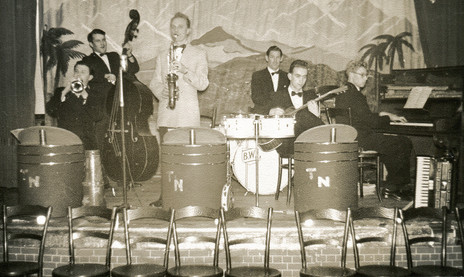
In the late 1950s, the Trades Hall in Vivian Street, Wellington, used to run dances six nights a week, "catering mainly for the visiting sailors off ships (such as the Dominion Monarch) and local girls," says Garth Young. "There were fights every night, sometimes between the girls, and regular visits from the police who enjoyed throwing those they arrested down the marble stairs." From left, Nip Spring, trumpet; unidentified bassist; Tony Noorts, clarinet; Frank Simpkins, drums; Pym Ter Huppen, rhythm guitar; Garth Young on piano and piano accordion.
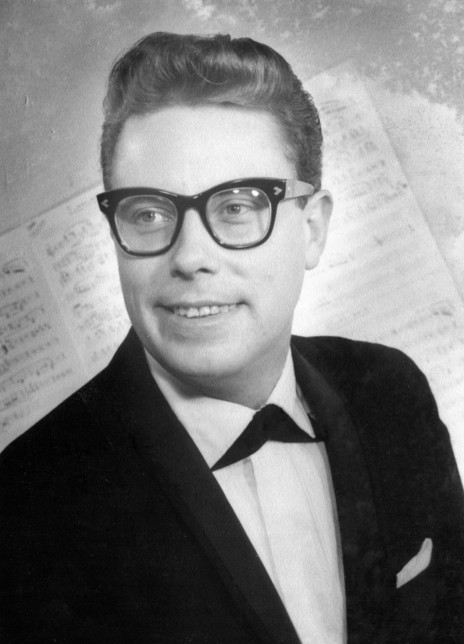
Garth Young: a formal portrait, early 1960s
Photo credit:
Don Peat
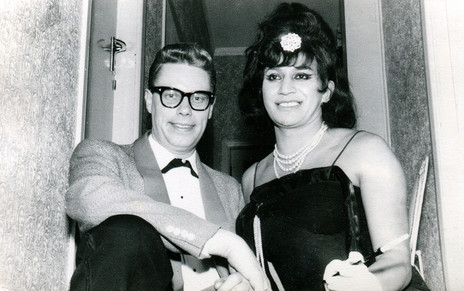
Garth Young, backstage at the Pines with Trevor Rupe, aka Carmen
Photo credit:
Don and Beatrice Peat
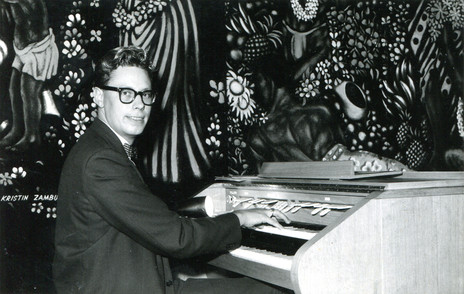
Garth Young performs in front of Kristin Zambucka's velvet mural, at the Hi Diddle Griddle, Karangahape Road, Auckland, c1961
Photo credit:
John Rykenberg (Garth Young collection)
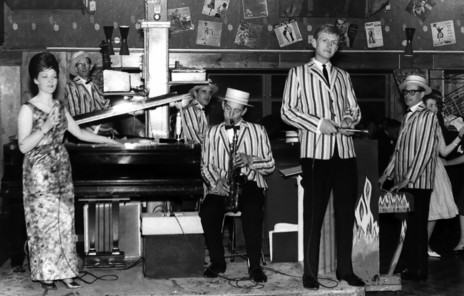
Tommy Adderley at the Pines, Wellington, early 1960s. From left, Mary Larkin, guest vocalist; Slim Dorward, bass; Bruno Lawrence, drums; Hymie Levine, reeds; Tommy Adderley, vocalist; Garth Young, piano and organ. Larkin was an Irish-born singer who recorded two LPs for HMV (NZ) in 1965-1966, arranged by Garth Young. One was called The Party's at Our Place Tonight.
Photo credit:
Don and Beatrice Peat/Garth Young collection
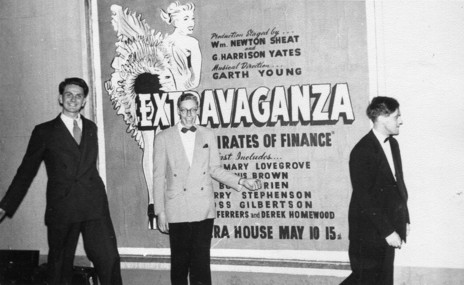
Garth Young, centre, with Gavin Yates, left, and Bill Sheat, the co-producers of the Victoria University 1954 "extravaganza", The Pirates of Finance. Young was musical director. The "extravaganza" revues began in 1906 and, from the 1960s to 1980s, nurtured the careers of performers such as John Clarke, Simon Morris, Roger Hall and David Geary. Yates, a minister and broadcaster, is the father of Charlotte Yates; Sheat became a dedicated supporter of the arts.
Photo credit:
Robert H Smith
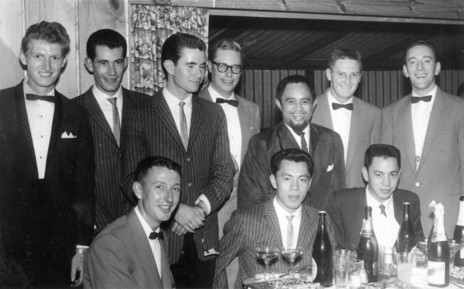
A young Tommy Adderley at the Pines, Wellington (far left), with cabaret performer Kahu Pineaha (in goatee), and the Garth Young Trio: Young in glasses, Bobby Little beside Pineaha, and Hymie Levin. At the front left is a Canadian bass player, Jimmie Wilson "who played there for some time when Slim was sacked by Pat McCashin," recalls Young.
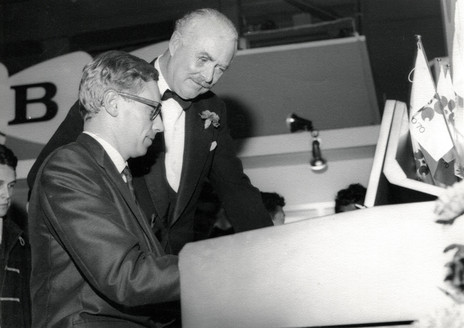
Garth Young entertains the Governor-General, Sir Bernard Ferguson, at the Wellington Winter Show, mid-1960s
Photo credit:
Don Peat
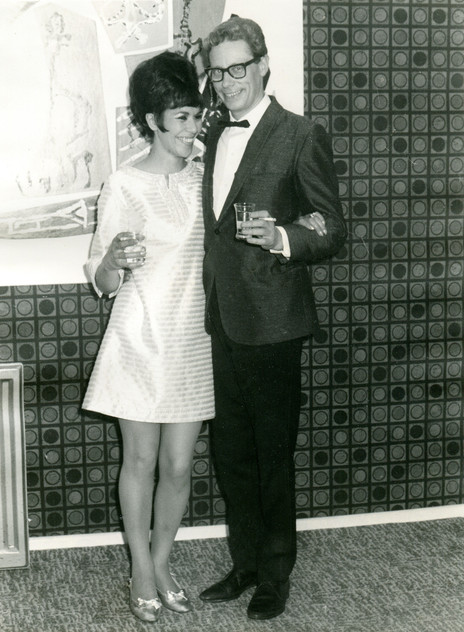
Maurine and Garth Young, 1960s
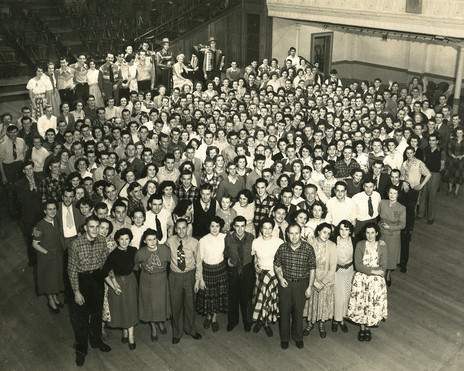
During the square-dancing fad that swept New Zealand in the early 1950s, Canadian-born entertainer Billy Blinkhorn visited to teach locals the steps. At this 1951 session in the Wellington Town Hall, Garth Young is on the right hand side of the band, wearing his piano accordion and a 10-gallon hat; Blinkhorn is at the microphone
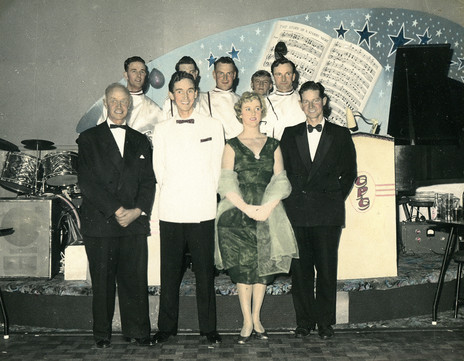
Paul Walden, in the white tuxedo second from left, at the Central Park Cabaret, Wellington, 1950s. Also in the front row are, from left: Peter Noorts (father of clarinettist Tony Noorts), Walden, Kath Berry, Frank Simpkins. Peter Noorts and Frank Simpkins were partners in running the Cabaret as they had been previously with the Trades Hall Dance. In the back row, at the far left, is John Mahn trumpet; on the far right is his brother, Denny Mahn, bass and trombone. Also in the band were Garth Young and Tony Noorts. Recalls Young: "The strange appearance of the band is caused by us wearing fancy satin blouses for the Latin-American segment of the entertainment, where we all lurched onstage in a conga line shaking and scraping various instruments."
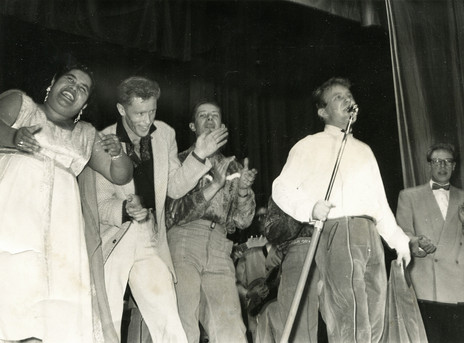
A curtain closer on the Johnny O'Keefe tour. From left: Rama White, Red Hewitt, unidentified, Johnny O’Keefe and Garth Young
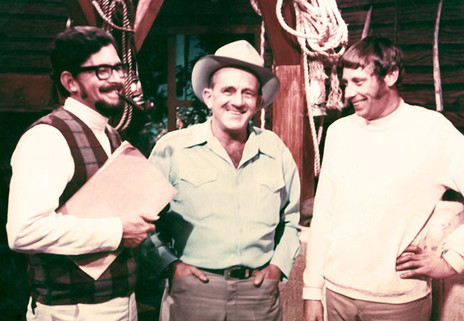
On the set of Country Touch, 1969, from left: “chorale arranger” Brian Hirst, host Tex Morton and musical director Garth Young. - Garth Young collection
Photo credit:
Garth Young collection
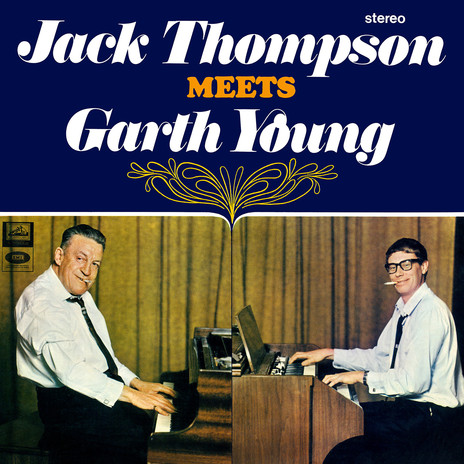
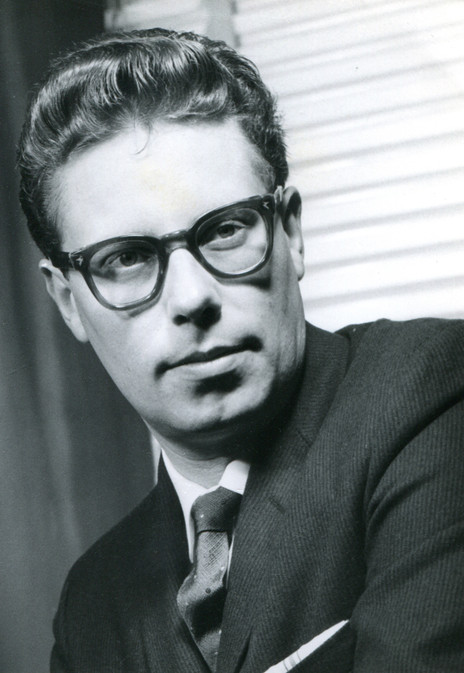
Garth Young, music man of Wellington, early 1960s
Photo credit:
Don Peat
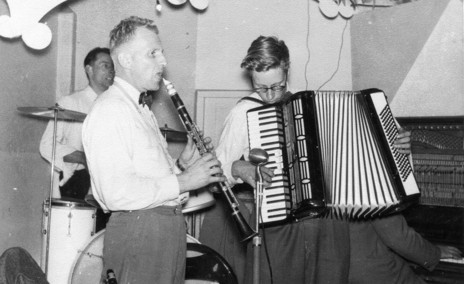
At the Rio Grande, Miramar, mid-1950s. On drums is Trevor Tasker; on piano accordion is Garth Young. The clarinet player, who also doubled on violin, is unidentified, but Young remembers "in his day job he was the chef at General Motors, Petone".
Photo credit:
Robert H. Smith
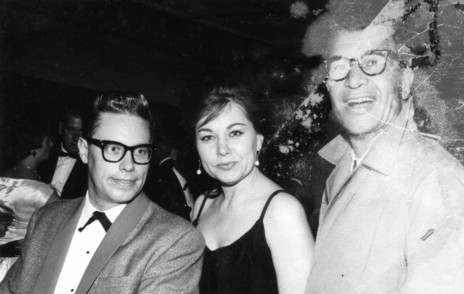
Dave Brubeck visits the Pines, Wellington, in the early 1960s. Beside him is Garth Young, left, and an unidentified US singer who travelled with the Brubeck tour.
Photo credit:
Don Peat
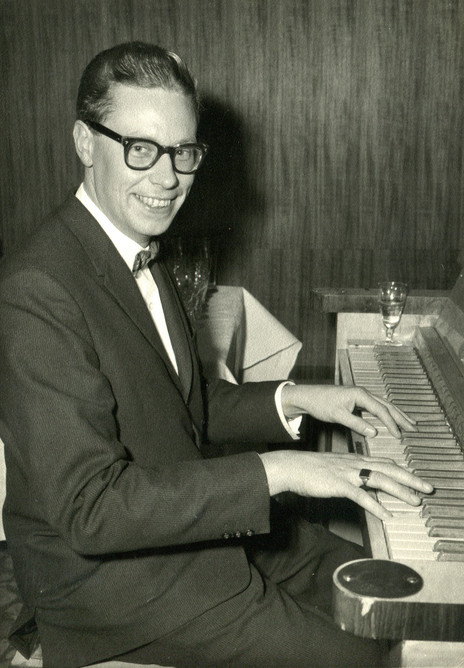
Garth Young at the keyboard, late 1950s
Photo credit:
Spencer Digby
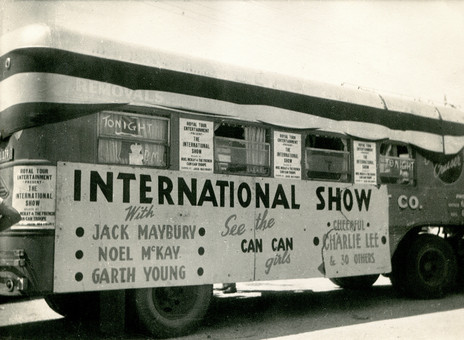
The transport for Royal Tour Entertainment's "International Show", c1960. Besides Garth Young, among the entertainment was John Maybury (son of radio legend Jack, and perennial compere of the Auckland Easter Show), and female entertainer Noel McKay. The "French Can-Can Troupe" was, recalls Young, "three little girl dancers that Noel had trained up from Christchurch".
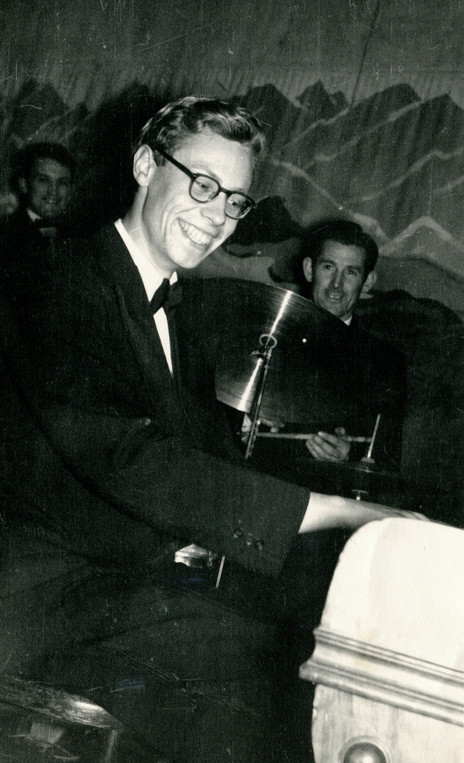
Garth Young at the piano early in his career, location unknown, 1950s.
Photo credit:
Robert H. Smith
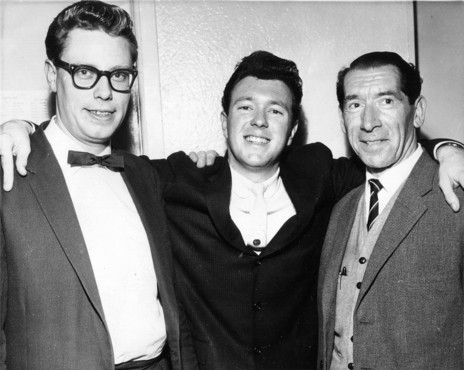
Garth Young with Johnny Devlin, early 1960s. At right is Devlin's manager at the time, John Naylor.
Photo credit:
M Vinsen
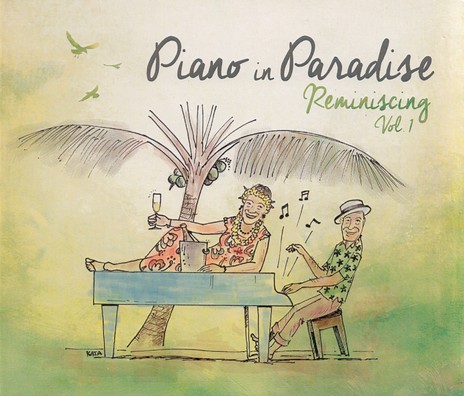
Garth Young's 2014 CD 'Piano in Paradise: Reminiscing volume 1', recorded in Rarotonga using a Casio Privia PX-310 directly into a Zoom H2n. On the cover is Garth and his wife Maurine.
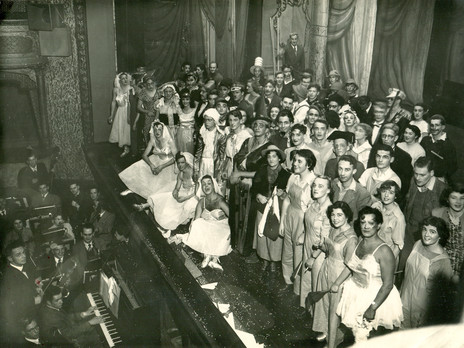
An ‘Extravaganza’ by students of Victoria University of Wellington, 1954, produced at the Opera House by Bill Sheat, Gavin Yates and Garth Young. “I was MD, waving my arms about in the pit,” recalls Young, who is pictured at the bottom left, beside the pianist.
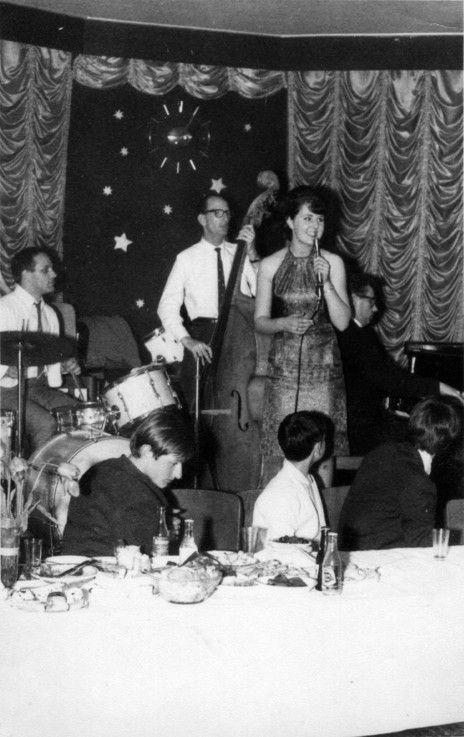
Rochelle Vinsen and band performing at Librettos guitarist Lou Parun’s 21st birthday party. Bruno Lawrence is on drums and Garth Young on piano.